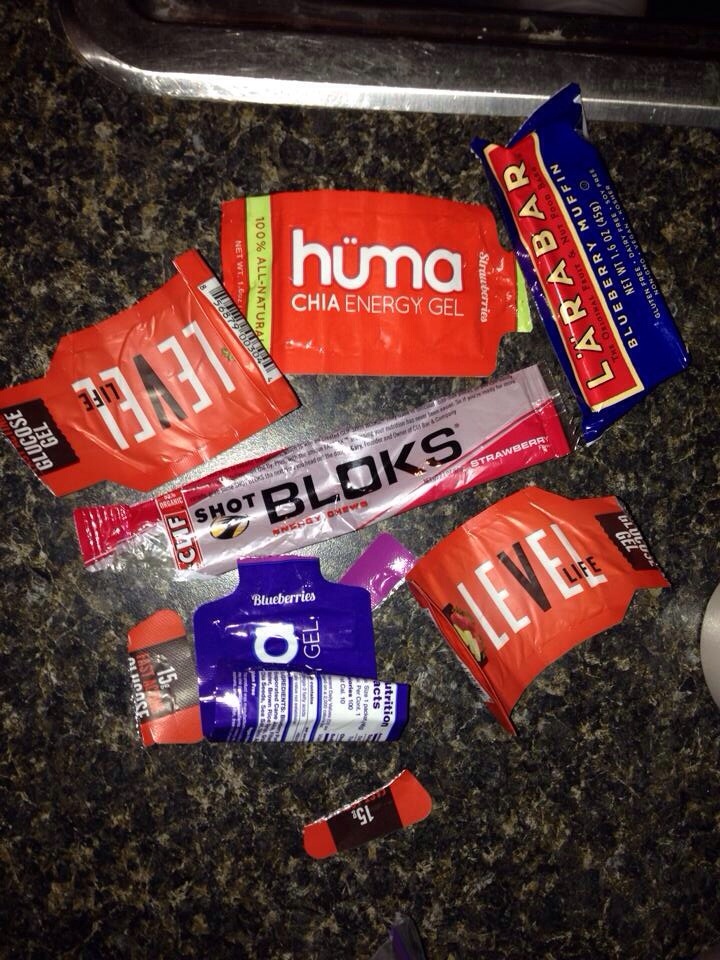I’m a gambler.
I bet you didn’t know that, but I am. Every time I ride, I’m a gambler.
Some will tell you there’s a skill to gambling — knowing the formula for a particular game. Well… welcome to my life on a bicycle.
Simply having type 1 diabetes is a daily science experiment, but adding strenuous exercise into the mix can be taxing. Let me back up a moment to the basics… My constant goal with diabetes is to keep my blood sugar between 70-140 mg/dL (This is my personal range, but everyone has different ranges that work best for them.) I balance it within those ranges by dosing a particular amount of insulin based on the grams of carbohydrates I eat and what my blood sugar is at the time. I have a sliding scale for both. But any time I give insulin, I also factor in how much insulin I still have in my system from any previous doses and what my activity level is going to be for the next three hours. Picture the iconic image of the scales of justice, and my goal is to constantly keep them even.
Keep in mind, all of those detailed calculations of insulin-to-carbohydrate ratios go out the window once a month, any time I’m sick, and on days of increased stress. Lots of outside forces affect my blood sugar levels, so it is a constant balancing act.
Knowing how many things have to be factored into every insulin dose, imagine the equation gets even more detailed when I get on a bike. While exercise is vital to healthy living (especially with diabetes), it also causes my blood sugar to drop at warp speeds — specifically cycling. Very rarely do I have the luxury of dropping what I’m doing to hop on my bike for a spontaneous ride. I have to plan.
Insulin stays in my system for three hours, and I try to ride without any active insulin so I need to know I’m riding at least three hours prior to setting off. I try not to have active insulin in my system because when I exercise, I have a heightened sensitivity to insulin so it’s working overtime, increasing the likelihood of low blood sugars. To maintain a 100-150 average on the bike, I need to eat 15-25 grams of carbs every 30-45 minutes depending on how hard I’m working. And if my blood sugar spikes over 240, there’s no riding because my body is no longer using glucose for fuel. It begins to break down fats for energy, which puts me at a significant increase for dehydration and to develop ketones, which make me incredibly sick.

I buy special snacks for the road — snacks that are easy to stuff in my kit and snacks that offer the right energy-boosting ingredients. But mostly, I buy snacks that are low in sugar and match that perfect 15-25 grams of carbohydrate sweet spot, along with some protein. Realistically, it’s a pain but as with every other part of diabetes, I do it because it’s required. I want to ride so I do my homework and take the necessary steps to be safe and healthy.
The other day in an extremely rare turn of events, I found myself running a 5K. (The world isn’t ending, but there were cute baby goats involved to persuade my legs to run.) I have a cycling skirt with a pocket on the back that holds my pump so I wore it for the 5K and added my phone, my license and insurance card and two snack packets. Every stride I took, the pouch on the back of my skirt bounced. At one point, it literally bounced itself to the ground. It was ridiculous. I looked at all the runners around me, and for a few moments, I was super angry and my heart burned with jealousy at everyone who simply laced up their sneakers and hit the trail.
Fortunately, I have some spectacular friends who wouldn’t let me stay in that place of self-pity, and I snapped out of it quickly. I don’t like whining about the downside of diabetes, but I’m human, and I have moments like everyone else. This weekend found me in one of those moments. I am tired of planning and being prepared. I’m tired of having to work so hard for a two-hour ride. Oh, what I’d give to grab my bike and bottle of water and just head out.

I participate in a JDRF Ride to Cure every year because I am tired, y’all. Tired of science equations, tired of math calculations, tired of looking like a chipmunk on a bicycle. I dream of a day when I can walk out of my house without running through a mental checklist of diabetes information. Or to eat a hamburger and fries without counting out each individual fry or sizing up the bun. Or to simply take my dog for a walk without having to carry an entire suitcase. OK, maybe that last one was a stretch, but you get the point. It’s a regular gamble hoping the formula I’ve factored for a particular day pays off. Usually it does but some days, it’s disastrous. Some days, I have to sit on the bench and take a breather because of diabetes, and every single time, it makes me mad.
One day, it will change though. With the Artificial Pancreas Project, the first big change is on the horizon. I dream of the day I can ride without a plan, without a kit full of snacks, without a medic alert bracelet. Oh man, do I dream.
I stumbled upon your blog a few days ago and I find it interesting your blood sugars drop when you ride. I started riding indoors this winter at my boyfriends indoor cycling studio and stopped over the last month to run instead and have noticed no matter what the exercise is my blood sugars are so HIGH after I work out. Do you give yourself insulin before every exercise or only if your numbers are in a certain range? I have yet to travel outside on the bike to much for fear of the unknown and not trusting the drivers because of their distraction levels but my plan is to ride for my local ADA ride next June for 100 miles.
Hi Lindsay. Great work cycling and running! Keep up the good work and you’ll be in great shape for the ADA ride next year. Personally, I prefer not to have any active insulin in my system when I’m exercising, but if I rise above 150, I will give a correction. I have a sliding scale I use, but when I exercise, the correction is usually less than what I’d give if I weren’t using energy. I used to spike after rides, but don’t much anymore. I think it’s a combination of adrenaline and lactic acid build up. I try to do a 10-15 minute cool down after strenuous exercise. It helps with the highs and muscle recovery. Some times, I’ll bolus toward the end of the ride, but usually the cool down period is a enough to stop the spike. I’ve come to all of this through many, many trial and error processes and with the help of my doctor, my nutritionist and my dietitian (who is also a type 1 athlete.) Keep in mind, I’m not a doctor or medical expert; I’ve just had diabetes for 20+ years.